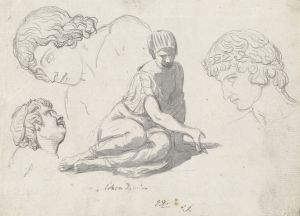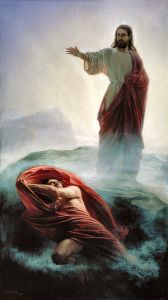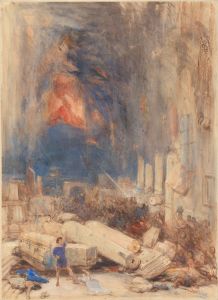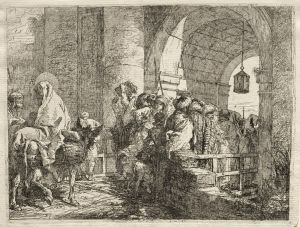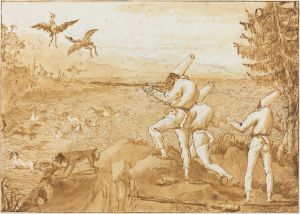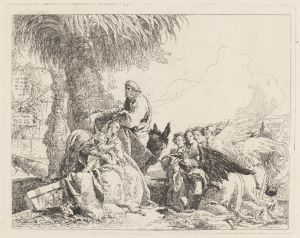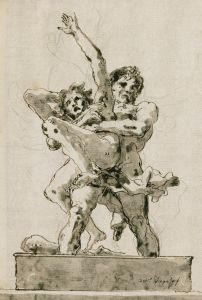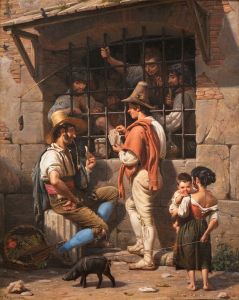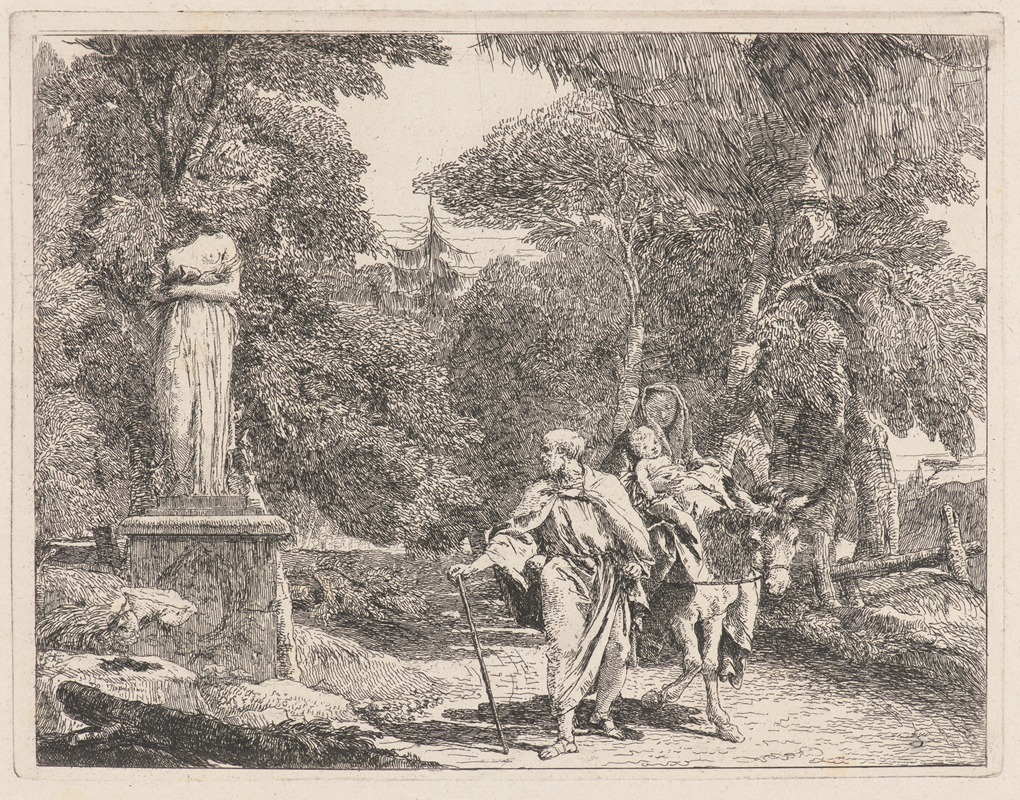
The Episode of the Falling Idol
A hand-painted replica of Giovanni Domenico Tiepolo’s masterpiece The Episode of the Falling Idol, meticulously crafted by professional artists to capture the true essence of the original. Each piece is created with museum-quality canvas and rare mineral pigments, carefully painted by experienced artists with delicate brushstrokes and rich, layered colors to perfectly recreate the texture of the original artwork. Unlike machine-printed reproductions, this hand-painted version brings the painting to life, infused with the artist’s emotions and skill in every stroke. Whether for personal collection or home decoration, it instantly elevates the artistic atmosphere of any space.
Giovanni Domenico Tiepolo, an Italian painter and printmaker, was an influential figure in the 18th century, known for his vibrant and dynamic compositions. One of his notable works is "The Episode of the Falling Idol," a painting that exemplifies his skill in capturing dramatic narratives and complex scenes. This artwork is part of a series of frescoes that Tiepolo created, which are renowned for their intricate detail and vivid storytelling.
"The Episode of the Falling Idol" is a depiction of a dramatic and chaotic scene, characteristic of Tiepolo's ability to convey movement and emotion. The painting illustrates a moment of upheaval, where an idol, a representation of a deity or revered figure, is shown in the process of falling. This event causes a stir among the figures present, capturing a sense of urgency and disorder. Tiepolo's use of color and composition draws the viewer's eye across the canvas, emphasizing the central action while also highlighting the reactions of the surrounding figures.
Giovanni Domenico Tiepolo was the son of the famous Venetian painter Giovanni Battista Tiepolo, and he often worked alongside his father. Domenico inherited his father's flair for dramatic scenes and grand compositions, but he also developed his own distinct style. His works often include a blend of religious and mythological themes, infused with a sense of theatricality and movement.
The painting is a testament to Tiepolo's mastery of the fresco technique, which involves applying pigment onto freshly laid wet plaster. This method requires precision and speed, as the artist must complete the work before the plaster dries. Tiepolo's skill in this medium is evident in the fluidity and vibrancy of the colors, as well as the intricate details that bring the scene to life.
In "The Episode of the Falling Idol," Tiepolo's attention to detail is apparent in the expressions and postures of the figures, each reacting differently to the event unfolding before them. The composition is carefully balanced, with the central action of the falling idol drawing the viewer's focus, while the surrounding chaos adds depth and context to the narrative.
This painting, like many of Tiepolo's works, reflects the cultural and artistic milieu of 18th-century Venice, a time when art was heavily influenced by the Baroque style, characterized by dramatic expressions, bold contrasts, and dynamic movement. Tiepolo's ability to capture these elements in his work has cemented his reputation as one of the leading artists of his time.
"The Episode of the Falling Idol" remains an important piece in the study of Tiepolo's oeuvre, offering insight into his artistic process and thematic interests. It showcases his ability to blend narrative and technique, creating a work that is both visually striking and rich in storytelling.





